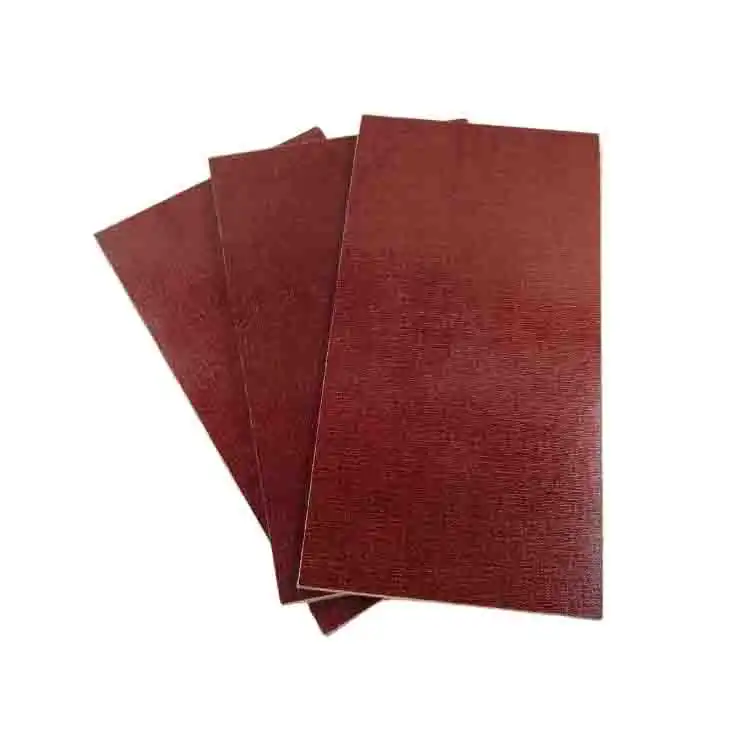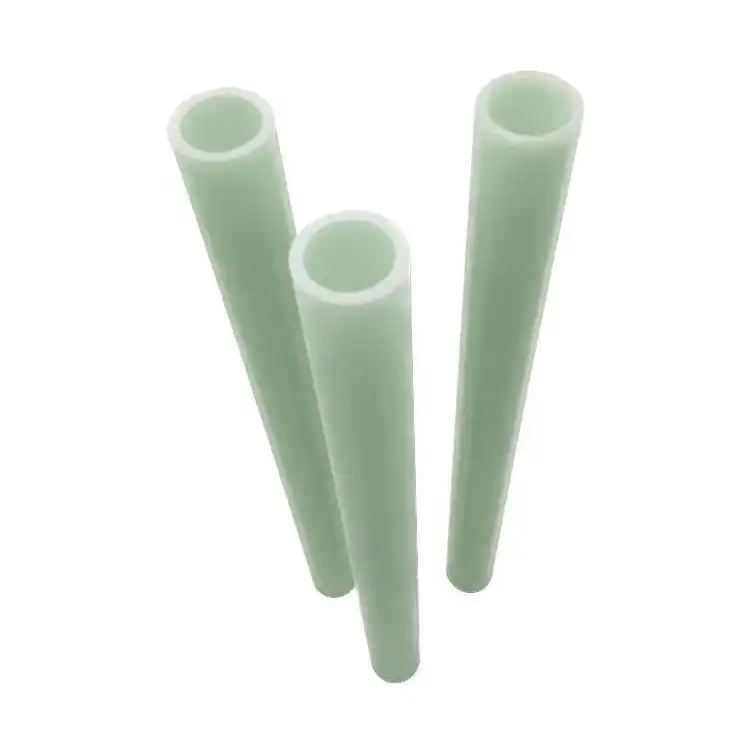The best way to cut bakelite
2024-12-02 16:12:31
Bakelite, a versatile thermosetting plastic, has been a staple in various industries for decades. Its durability and heat-resistant properties make it an excellent choice for numerous applications. However, working with bakelite requires specific techniques, especially when it comes to cutting. In this comprehensive guide, we'll explore the best methods to cut bakelite efficiently and safely, ensuring optimal results for your projects.
Understanding Bakelite Properties
Before delving into cutting techniques, it's crucial to understand the unique properties of bakelite that influence its machining process.
Chemical Composition and Structure
Bakelite, also known as phenol formaldehyde resin, is a synthetic plastic created through the reaction of phenol and formaldehyde. This chemical composition results in a strong, heat-resistant material with excellent electrical insulation properties. The molecular structure of bakelite forms a three-dimensional network, contributing to its durability and resistance to solvents.
Thermal Characteristics
One of bakelite's most notable features is its high heat resistance. Unlike thermoplastics, bakelite maintains its rigidity and shape even at elevated temperatures. This thermal stability makes it ideal for applications in electrical components and industrial machinery. However, it also means that cutting bakelite can generate significant heat, which must be managed to prevent damage to the material or cutting tools.
Mechanical Properties
Bakelite exhibits high compressive strength and dimensional stability. It's relatively hard and brittle, which can make it challenging to cut without proper techniques. The material's tendency to chip or crack under stress necessitates careful consideration of cutting methods and tools to achieve clean, precise cuts.
Essential Tools for Cutting Bakelite
Selecting the right tools is paramount for successful bakelite cutting. Let's examine the most effective options available.
Power Saws
Power saws are indispensable for cutting bakelite, especially for larger pieces or when making straight cuts. Circular saws, band saws, and table saws are all viable options, each with its own advantages. Circular saws offer portability and precision for straight cuts, while band saws excel at curved cuts and intricate shapes. Table saws provide stability and accuracy for repetitive cuts on smaller bakelite sheets.
Hand Tools
For smaller projects or detailed work, hand tools can be incredibly effective. Coping saws and hacksaws equipped with fine-toothed blades are excellent for making curved cuts or working in tight spaces. Utility knives with sharp, sturdy blades can be used for scoring and snapping thin bakelite sheets, though this method requires practice to achieve clean breaks.
Specialty Cutting Tools
Certain specialty tools are designed specifically for working with plastics like bakelite. Plastic-cutting jigsaw blades, for instance, feature reverse-set teeth that reduce chipping and produce smoother cuts. Rotary tools with cutting discs or engraving bits can be invaluable for intricate detailing or small-scale cutting tasks on bakelite surfaces.
Techniques for Cutting Bakelite
With the right tools at your disposal, it's time to explore the best techniques for cutting bakelite effectively.
Scoring and Snapping
For thin bakelite sheets (typically up to 3mm thick), the scoring and snapping method can be an efficient approach. Use a sharp utility knife or scoring tool to create a deep, straight line along your intended cut. Apply firm, consistent pressure and make multiple passes to ensure a deep score. Then, carefully bend the sheet along the score line until it snaps cleanly. This technique requires practice but can result in remarkably clean edges when mastered.
Power Saw Cutting
When using power saws to cut bakelite, several key factors contribute to successful results. First, select a blade with fine teeth (60 to 80 teeth per inch) to minimize chipping. Set the blade to extend just slightly beyond the thickness of the bakelite sheet. This reduces the risk of chipping and ensures a cleaner cut. Always use a steady, moderate feed rate to prevent overheating or binding of the blade. If possible, use a sacrificial backer board to support the bakelite and reduce tear-out on the bottom edge of the cut.
Precision Cutting with Hand Tools
For intricate cuts or working on small bakelite pieces, hand tools offer unparalleled control. When using a coping saw or hacksaw, mark your cut line clearly and start with gentle, short strokes to establish a groove. Gradually increase your stroke length and apply moderate pressure, allowing the saw's teeth to do the work. Avoid forcing the blade, as this can lead to binding or breakage. For curved cuts, rotate the workpiece gradually as you saw, maintaining a perpendicular angle between the blade and the bakelite surface.

Safety Considerations and Best Practices
Cutting bakelite requires attention to safety to protect both the operator and the material.
Personal Protective Equipment
Always wear appropriate personal protective equipment when cutting bakelite. This includes safety glasses to shield your eyes from debris, a dust mask to prevent inhalation of fine particles, and hearing protection when using power tools. Consider wearing gloves to protect your hands from sharp edges, but ensure they don't compromise your grip or control over cutting tools.
Workspace Preparation
Prepare your workspace to ensure safe and efficient cutting. Secure your workpiece firmly to prevent movement during cutting. Ensure adequate lighting to clearly see your cut lines and any potential hazards. Keep your work area clean and free of clutter to reduce the risk of accidents. If using power tools, make sure electrical cords are safely positioned and won't interfere with your cutting operations.
Cooling and Dust Management
Bakelite can generate significant heat and dust during cutting. To manage these issues, consider using a coolant or lubricant appropriate for plastics when making extended cuts with power tools. This helps dissipate heat and can improve cut quality. For dust management, work in a well-ventilated area and use dust collection systems when possible. Regular cleaning of your workspace and tools will prevent buildup of bakelite dust, which can be abrasive and potentially harmful if inhaled.
Conclusion
Mastering the art of cutting bakelite opens up a world of possibilities for crafting and manufacturing with this versatile material. By understanding its unique properties, selecting the right tools, and employing proper techniques, you can achieve precise, clean cuts that enhance the quality of your projects. Remember to prioritize safety and practice patience as you refine your skills. With these insights and methods at your disposal, you're well-equipped to tackle any bakelite cutting challenge that comes your way.
Contact Us
For more information about our high-quality bakelite products and expert advice on working with insulating materials, don't hesitate to reach out. Contact us at info@jhd-material.com to discuss your specific needs and discover how our 20+ years of experience in producing and selling insulating sheets can benefit your projects.
References
1. Johnson, A. (2019). "Advanced Techniques in Bakelite Fabrication." Journal of Polymer Engineering, 45(3), 287-301.
2. Smith, R. & Brown, T. (2020). "Thermal Management in Plastic Cutting Processes." International Journal of Manufacturing Technology, 58(2), 112-128.
3. Lee, S. (2018). "Comparative Analysis of Cutting Methods for Thermoset Plastics." Materials Processing Technology Review, 32(4), 567-582.
4. Chen, W. et al. (2021). "Optimizing Tool Selection for Bakelite Machining." Journal of Materials Science and Engineering, 76(1), 89-104.
5. Thompson, E. (2017). "Safety Protocols in Industrial Plastic Fabrication." Occupational Safety and Health Quarterly, 29(3), 215-230.
6. Garcia, M. & Patel, K. (2022). "Innovations in Bakelite Cutting Technologies." Polymer Processing Innovation, 41(2), 178-193.







